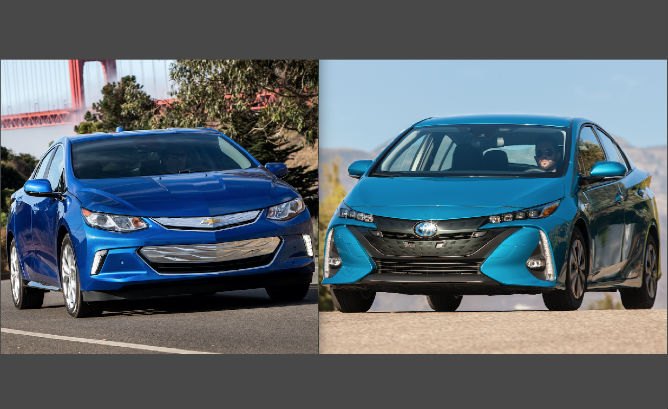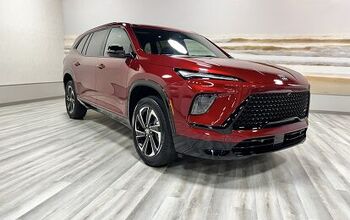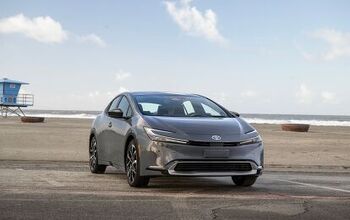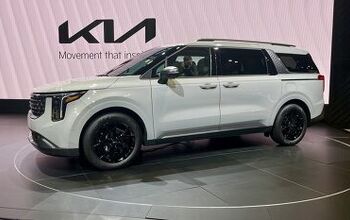What Makes More Sense - Chevrolet Volt or Toyota Prius Prime?
The Chevy Volt is America’s best-selling plug-in gas-electric car but as sales this year of Toyota’s new Prius Prime are improving, which would make better sense for you?
If that most-telling measure – consumer purchases – is any indicator, the Volt is still ahead in the U.S. plug-in hybrid popularity contest, but not by much. Through May the Volt has 9,187 sales to the second-place Prime’s 8,073. The Prime has led by slim margins the last couple of months and this spring was just being introduced to dealers, though Toyota says it’s now available nationwide.
Aside from sales, there are of course other meaningful measures of relative value to compare the U.S. built “extended range EV” to the Japanese-imported plug-in hybrid. To explore these, we’ll highlight some of the key factors.
The World’s Only Gen-2 Plug-ins
Plug-in electrified vehicles are relatively new, and the Volt was the first to receive a full redesign in 2016 following its origination in 2011. On its heels came the 2017 Prius Prime – renamed from “Prius Plug-in Hybrid” which had been released as a mid-cycle variant in 2012 of the 2010-2015-era Prius Liftback.
Both are purpose-built electrified vehicles, and not modified versions of conventional petroleum-powered models, distinguishing them from several other plug-in hybrids in their competitive set – though others. such as Hyundai’s Ioniq PHEV, are on their way.
Plug-in Hybrids
For those who still think the Volt is a series hybrid whose gas engine does nothing but generate electricity, that was not completely true for gen-1, and is not the case at all for gen-2. In updating the Volt, GM modified the powertrain architecture so as to make it suitable as gene stock for future hybrids and plug-in hybrids, but its “extended-range electric” operation remains.
Significantly, the Volt will accept full acceleration without kicking its gas engine on for backup power all the way to its 102 mph top speed. The Prius Prime also has been given something similar. With a fully charged battery, it defaults to EV mode and will stay in EV mode without turning the engine on at full throttle up to 84 mph.
All-Electric Range
Arguably the biggest reason why anyone buys a plug-in hybrid over a conventional hybrid is its ability to drive in EV mode. The idea is to bridge the benefits of a pure EV without concern for “range anxiety.”
If that’s your reason to buy one of these cars, you can stop right here and declare the Volt the winner. Its 53 miles of EV range is accomplished by a big – and more costly to produce – 18.4-kWh battery pack. The Prius Prime makes do with 8.8-kWh for 25 miles range.
Toyota points out that 50 percent of drivers’ daily traveling needs may be served by the range provided by its Prius with a plug, but the Volt is good for more than 75 percent of drivers.
The key question for a prospective buyer is whether 25 miles is enough to satisfy you, or would 53 be so much better? If you’ve never driven a plug-in hybrid, we’ll hint the EV experience is addictive and many a PHEV driver does wish for more electric range.
MPGe
“Miles per gallon equivalent” (MPGe) is the EPA’s virtual measure of efficiency with electric power, and the Prius Prime is astonishingly efficient with 133 MPGe in EV mode, versus the Volt’s 106 MPGe.
Another way to slice this is the Prime is rated 25 kWh/100 miles, and the Volt is rated 31 kWh/100 miles.
MPG
Though the Volt is dominant in all-electric range, a layer of complication comes in when assessing mpg in gas-burning hybrid mode. With either car, eventually, the reality of gasoline burning returns when the battery is depleted, and here the Volt looks less impressive.
Specifically, it’s rated 42 mpg combined, and the Prius Prime is rated 54 mpg – midway between the 52 mpg Prius Liftback its based on, and the ultra-efficient 56 mpg Prius Two Eco.
That’s superb efficiency, and Toyota’s engineers placed a priority on actually improving mpg while GM cut back on what is possible. This is shown by the larger, more powerful Malibu Hybrid, which uses a Volt-based powertrain, yet gets 46 mpg.
A Volt that got closer to 50 mpg would be nice, but if you stay in EV mode, its 42 mpg rating becomes less relevant. Even on drives past the battery power’s range, the Volt retains an advantage in total energy consumption, but after a point the Prius matches it, and surpasses it.
Long drives well over 100 miles will see the Prime doing better, but as observed above, many drivers don’t do that kind of distance except occasionally.
Total Energy Costs
According to the very standardized metrics of the EPA, the Prius Prime saves $4,250 over five years compared to a 26 mpg car, which is average for 2017. The Volt saves $3,750 over five years, so the feds declare the Toyota cheaper to operate.
These measures go out the window however depending on how much EV driving one does, what you pay for electricity (if anything, if you happen to have solar), what gas costs in your area, and otherwise how aggressively or carefully you drive.
With more than double the EV range, the Volt stands to beat the averaged numbers of the EPA, but again, this question is answered on a case by case basis.
Functionality
Unlike the Prius Liftback, Toyota chose to make the Prime a four-passenger car. Its rear seat area is divided like the gen-1 Volt’s back seat was and this is ironic. GM caught flak for the lack of rear middle seat space and in response gave gen-2 a compromised rear middle “seating position” in which a child (or child seat) can fit.
Toyota seemed to take a step backwards, but realistically, the compromise is not that great. For one, the rear leg room for the right and left passengers is greater for the midsized Toyota than the compact Chevy. An adult can fit on the Volt’s middle hump perch but it is definitely the “cheap seat.”
Beyond this, both cars are well-equipped with roomy front seat space. Being hatchbacks, they can cram in a lot of stuff, but the Prime is larger. Interior cargo volume is 19.8 cubic feet next to the Volt’s 10.6 cubic feet.
Other meaningful measures are Prime’s EPA passenger volume measures to 91.5 cubic feet, compared to the Volt’s 90.3 cubic feet.
Drive Experience
The 1.8-liter hybrid powertrain in the Prius Prime is good for 121 net system horses. The Volt’s 1.5-liter hybrid powertrain is rated 149 horses, and GM provides a torque figure of 294 pounds-feet.
Bottom line is the 3,543-pound curb weight Volt scoots from 0-30 in 2.6 short seconds, quicker than the 2.9-second Bolt EV, and makes it to 60 in an estimated 8.4. In its testing, Car & Driver pegged 0-30 in 2.5 seconds in either hybrid or electric mode. Zero-60 took 7.6 seconds in electric and 7.4 in hybrid, and the quarter mile was accomplished in 16.0@85 in electric, and 15.8@86 in hybrid.
For the 3,365-pound Prime, acceleration to 60 is comparable to the former Prius, or in the neighborhood of 10 seconds. The car is not sluggish, but it’s no hot hatch either. Car & Driver timed it to 30 in 3.5 seconds in electric mode, and 3 seconds in hybrid. To 60, it took 12.2 seconds in electric mode, and 10.2 seconds in hybrid. The quarter mile took 18.6 long seconds @72 slow miles per hour in electric mode, and 17.7 seconds @79 in hybrid mode.
While being quicker, note also how the Volt’s all-electric acceleration in EV mode and hybrid mode are more closely matched. A priority for GM was making the hybrid mode feel as close to EV mode as feasible so changeover from EV to hybrid mode is less perceptible.
The Prime on the other hand has bigger acceleration time gaps between electric and hybrid mode. This is because power in EV mode is lower in the car that’s less-powerful overall, and which has less than half the battery capacity for it to tap into.
In the corners the Volt was known since 2011 for being a step above the Prius, so for the updated Prius Liftback and Prius Prime, Toyota spent extra on an independent rear double-wishbone suspension. Combined that plus a stiffer Toyota New Global Architecture chassis for and it’s become the best handling Prius yet. Gone is the virtual hinge in the middle, and the vehicle is confidence inspiring through twisty bends.
Same goes with the improved Volt, and combined with the peppier powertrain, the sporty factor is still a step above – Car & Driver measued roadholding on a 300-foot skidpad at 0.81g for Volt, 0.76g for Prime.
In our test drive on California’s Route 1 above San Francisco, the Volt proved reasonably tossable, and fun. The left-side regen paddle also makes things interesting, and works like an alternative brake, while feeding energy to the battery.
Style
Clearly the Prime is much better looking than the Volt, so this case is closed.
What? You disagree? If you do, you would not be alone, and seriously, scores of readers have found the looks of Toyota’s new Prius most incongruous, but to be fair others like it.
Obviously we were just kidding about the Volt, and it is actually a well-proportioned car intended to not stand out as any kind of green car statement. In fact, its design language borrows elements from the Kia Forte, Honda Civic, and a whole lot from the Chevy Cruze.
The Prime, being the range topper in the Prius line, does get tweaks here and there and people have said it is net prettier than the Prius Liftback non-plug-in.
And then again, if you are biased by a form-follows-function ethos, both wind-cheating, and energy conserving vehicles are quite attractive, and realistically, they tend to blend in on the road though between the two, the Prius does stand out more.
Inside, both cars are modern and functional, with amenities like heated seats and info screens that pair to your smartphone.
Recommended is a trip to the dealer to see for yourself.
Brand and Reliability
It’s little secret that Toyota enjoys greater brand credence than Chevrolet, but before anyone scoffs at the Volt, it has been a reliable car and its powertrain – the crown jewel of the vehicle – has proven excellent.
GM reports no batteries have had to be replaced under warranty due to range degradation out of more than 100,000 Volts sold and its ability to maintain range is aided by liquid cooling.
Chevrolet furthermore reports it has been stacking up awards and accolades in the past few years, and it’s determined to continue putting a shine or respectability on its brand image into the future.
Price
The Prius Prime comes in three trims, Prime Plus ($27,985), Prime Premium ($29,685), and Prime Advanced ($33,985) – all including an $885 destination fee.
The Volt comes in two trims, the LT ($33,995), and Premier ($38,345) – including an $825 destination fee.
Looking at entry level, the Prime, which is perched midway in the price range of the non-plug-in Liftback, is eligible for a $4,500 federal tax credit, and potential state incentives as the case may be. The Volt is eligible for a $7,500 federal credit – so it stands to halve the $6,010 difference in sticker prices between the less-expensive Prime and itself. Assuming federal credit, the Volt nets to $26,495 and the Prime nets to $23,485.
That $23,485 by the way is $875 below the price of the base Prius One Liftback which stickers for $24,360 with destination. This helps explain in part why the Prime has sold so much better than the more costly, and shorter range former plug-in Prius. If it does much better, it could also in the next seven months close the 1,114 unit sales lead the Volt has through May and if it does, it could finish the year as America’s best-selling plug-in hybrid.
Wild card issues could include potential state incentives, and what you can actually get one of these beauties for at the dealer – i.e., are they willing to cut the price? By how much?
Combine that with the sum total of what each car represents and you can decide for yourself which would makes better sense for you.
Become an AutoGuide insider. Get the latest from the automotive world first by subscribing to our newsletter here.
More by Jeff Cobb











































Comments
Join the conversation